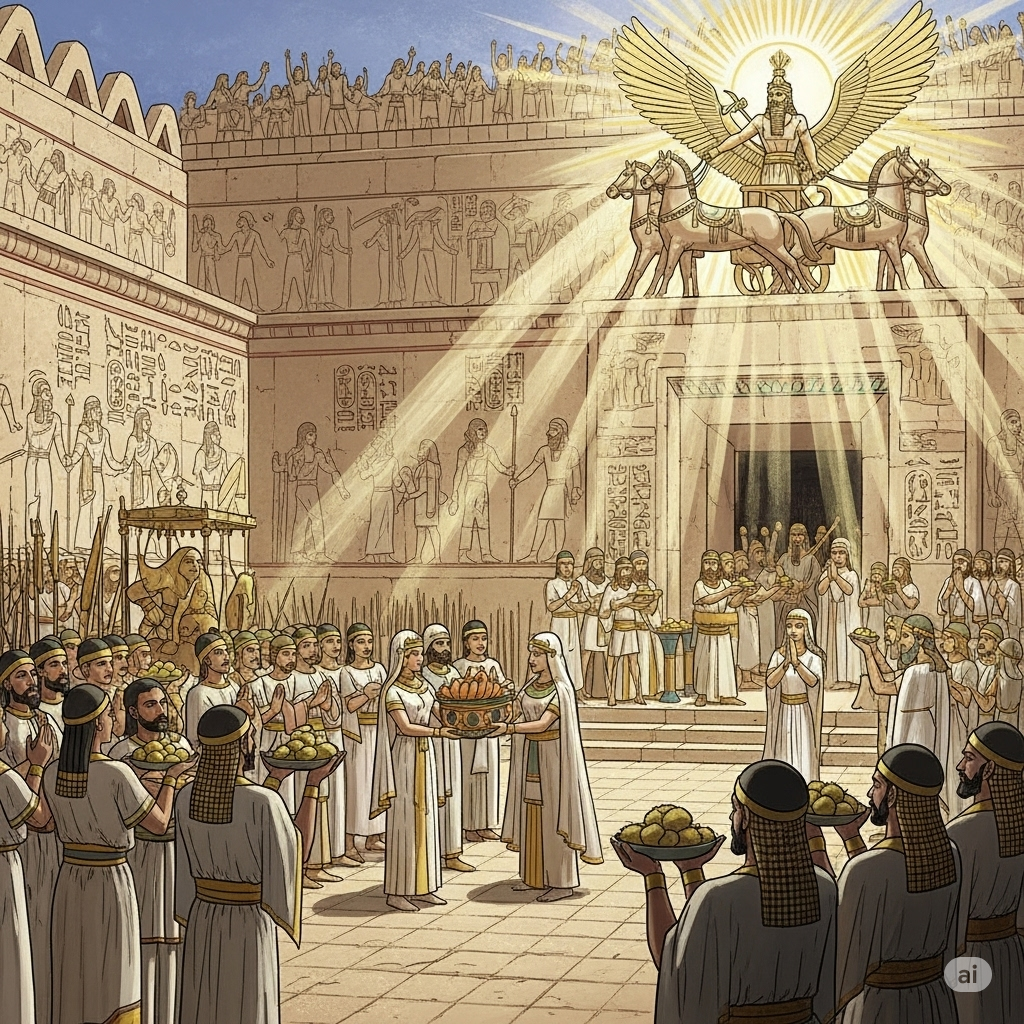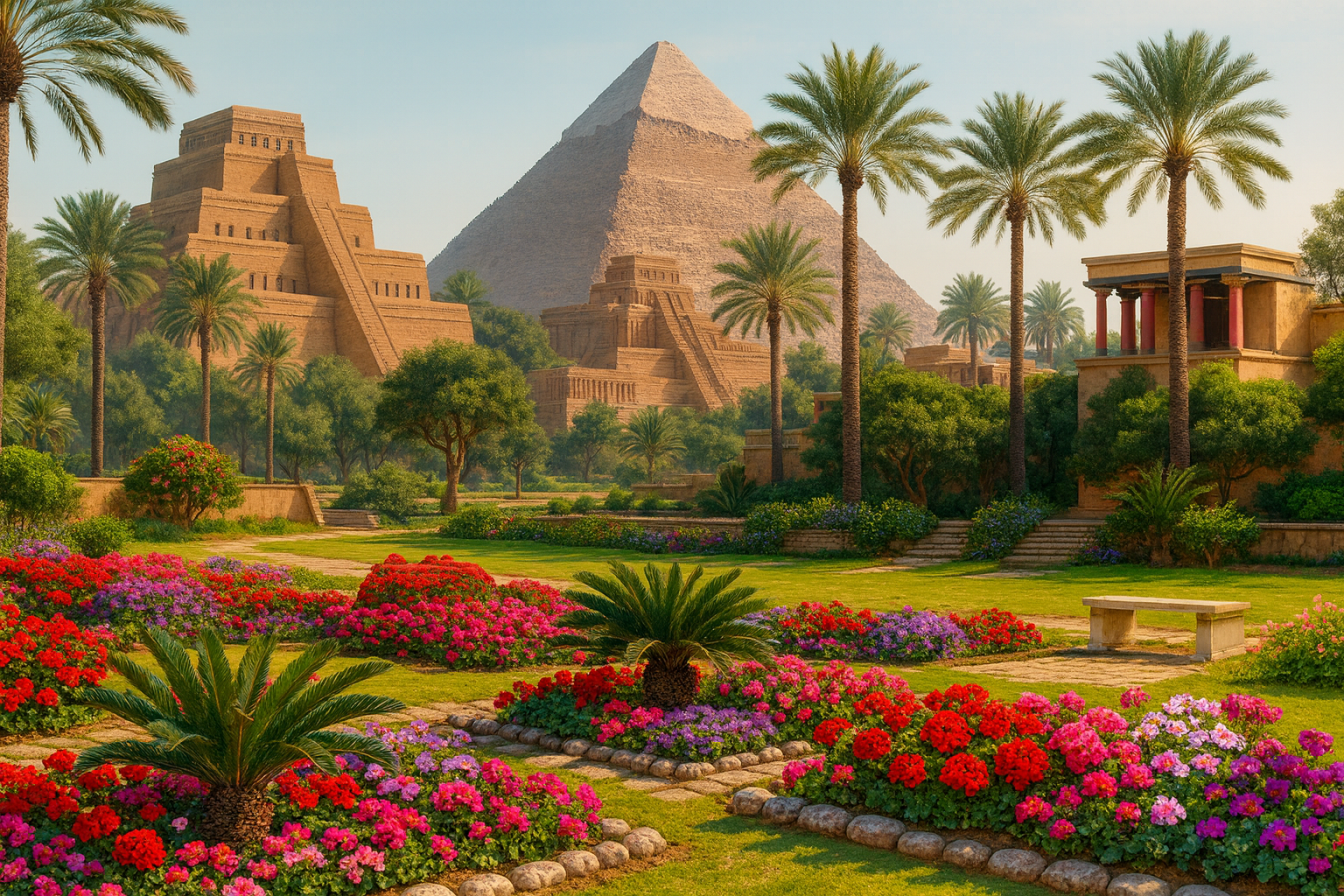Light of Heaven, Voice of Justice
In the vibrant world of Mesopotamian mythology, where gods ruled over every aspect of nature and society, Shamash stood as one of the most powerful and revered deities. Worshipped as the sun god, Shamash was more than a celestial body—he was the divine embodiment of justice, truth, and moral order. His gaze illuminated all things, and his judgment was inescapable.
This article delves into Shamash’s pivotal role in Sumerian, Akkadian, Babylonian, and Assyrian traditions, examining how he shaped ancient law, culture, and religion.
Who Was Shamash?
Shamash (known as Utu in Sumerian) was the sun god of Mesopotamia and a member of the divine triad alongside Sin (the moon god, his father) and Ishtar (goddess of love and war, his sister). Over time, Shamash came to represent divine justice—a role that transcended simple sun worship.
Name: Shamash (Akkadian), Utu (Sumerian)
Domains: Sun, justice, law, truth, divination
Symbols: Solar disc, rays, scales, saw or knife (used to cut through injustice)
Sacred cities: Larsa and Sippar
The Light That Judges All
As the sun god, Shamash was believed to travel across the sky by day, seeing everything that occurred in the world. His all-seeing nature made him a natural overseer of justice. At night, he descended into the underworld, judging the dead and returning with insight into human fate.
In this dual role, Shamash became protector of the righteous and punisher of the wicked. He revealed hidden truths and was invoked by kings and commoners alike when fairness was in doubt.
Shamash as the God of Justice
Perhaps Shamash’s most defining role was as the god of justice (dīn in Akkadian). His divine judgment was central to the Mesopotamian worldview, where maintaining order (called me or šimtu) was the highest moral duty.
The Code of Hammurabi
Shamash’s influence is immortalized in one of history’s most famous legal documents: the Code of Hammurabi (c. 1754 BCE). The stele of the law code features an iconic image:
Hammurabi stands before a seated Shamash, who hands him a rod and a ring—symbols of kingship and justice.
The message is clear: laws are not just royal decrees, but divine mandates.
This depiction underscores Shamash’s authority not just over natural forces, but over human morality, legal systems, and governance.
Worship and Temples
Shamash was worshipped in major temples, particularly at:
Sippar – home to the E-babbara (“Shining House”), a grand temple dedicated to Shamash.
Larsa – a rival city with its own E-babbara, showing the god’s widespread appeal.
Daily rituals included offerings, hymns, and prayers. Priests conducted divinations and sought justice through Shamash’s judgment—particularly through extispicy (reading of animal entrails) and dream interpretation.
Hymns and Literature: The Voice of the Just
Shamash features prominently in Mesopotamian hymns and epics, often praised for his fairness and clarity. Some notable texts include:
Hymns to Shamash – extol his role as a righteous judge who destroys evil and protects the innocent.
The Epic of Gilgamesh – Shamash aids Gilgamesh and Enkidu during their journey to defeat Humbaba, highlighting his role as a divine supporter of heroic justice.
A common literary motif is Shamash as the “Light of the Lands,” whose rays expose corruption and bring peace to the righteous.
Iconography and Symbolism
Art and cylinder seals often depict Shamash with:
Flames or rays erupting from his shoulders.
A knife or saw, symbolizing his ability to cut through deception and injustice.
Scales, reinforcing his role as a divine judge.
These symbols carried deep theological weight. To seek justice under Shamash was to appeal to divine truth, not just human law.
Legacy and Influence
Though Mesopotamian religion faded with time, Shamash’s legacy endured:
His association with solar justice influenced later deities, such as Helios in Greece and Sol Invictus in Rome.
His link to divinely sanctioned law shaped later conceptions of kingship and justice, even into Abrahamic traditions.
Echoes of Shamash’s themes appear in biblical and early Judaic texts, where God is described as a “sun and shield” and as a bringer of justice.
Conclusion: The Eternal Flame of Justice
Shamash was not merely the god of the sun—he was the divine eye that watched the world, the eternal witness to truth, and the force that held society together through justice. His influence reached beyond temples and city-states, becoming a central pillar of Mesopotamian law, governance, and morality.
In a world where divine justice was inseparable from cosmic order, Shamash shone as both light and law—a timeless symbol of fairness in an ancient and often chaotic world.







